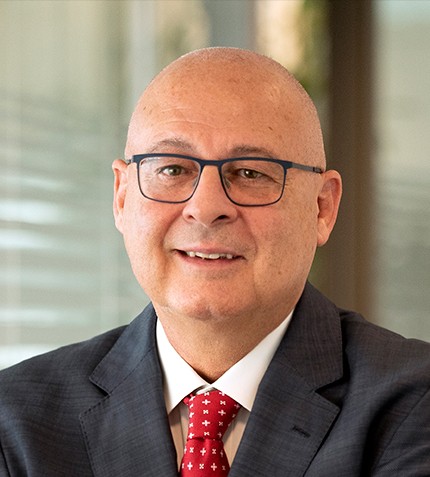
"Our mission is to bring novel and transformative therapies to the anterior (front) chamber of the eye, particularly for the treatment of ocular surface disease."
Jeffrey Nau
PRESIDENT & CEO, OYSTER POINT PHARMA
Can you give an overview of Oyster Point Pharma?
Oyster Point is one of the few companies focused on the discovery, development, and commercialization of first-in-class therapies to address ophthalmic disease. Our mission is to bring novel and transformative therapies to the anterior (front) chamber of the eye, particularly for the treatment of ocular surface disease. The company obtained its first FDA approval in 2021 for its Tyrvaya medication, the first and only nasal spray for the treatment of the signs and symptoms dry eye disease. Tyrvaya is believed to activate the trigeminal parasympathetic pathway inside the nasal cavity, resulting in increased own tear film.
In terms of operations, Oyster Point has a physical presence in the US and partnerships outside of the country. The company has an R&D arm, and we develop all our products internally. We have a gene therapy platform to deliver gene therapies to the lacrimal gland of patients and a bacteriophage program to treat bacterial infections in ophthalmology. We continue to look at other innovations to deliver therapy for eye diseases.
What does the market for Tyrvaya look like in the US?
In the US, there are over 38 million people with dry eye disease, only 17 million of whom are diagnosed. As such, the market for Tyrvaya is large and continues to grow, especially with the amount of screen time people experience today. We noticed an initially slow adoption of Tyrvaya, as it took people some time to get used to a nasal spray being used in ophthalmology. Now, the product has high market traction; we sold 5,500 scripts in the first two months it was on the market and have seen week-on-week growth since.
To gain a sense of the scale of the marketplace, it is helpful to look at the success of the two main players: Restasis reached US$1.2 billion in sales over the past four years and recently released a generic product, and Xiidra has accrued approximately US$600 million in sales. Patients of these products are often not satisfied with their current treatment options. As a new entrant into this space, Oyster Point offers an alternative foundational therapy.
Could you elaborate on the science behind Tyrvaya?
The body produces tear film in three ways – first, through feedback from the cornea or surface of the eye when there is wind; second, due to the fact that emotional centers of our brains are close to the tear producing area, meaning when we are happy or sad we often cry; third, as a result of simply breathing through our nasal passages and stimulating the trigeminal parasympathetic pathway, our nose, accounts for approximately 1/3 of our basal tear production.
Many times with ocular surface disease, the cornea pathway is damaged, preventing communication back to the lacrimal gland and the cells responsible for producing tears. Tyrvaya is believed to stimulate the nasal pathway, allowing patients whose cornea pathway might be damaged to go around this pathway and resulting in tear film production. The trigeminal pathway has only been harnessed in the last decade of research, and Oyster Point is excited to have the first pharmacological treatment that can be delivered as a nasal spray that is FDA approved for the treatment of the signs and symptoms of dry eye disease.
What does Oyster Point’s pipeline look like?
We expect a readout of our phase 2 program in Neurotrophic Keratopathy (NK) by the H2 2022. NK is a rare degenerative disease of the cornea characterized by reduction or loss of corneal sensitivity that can be either asymptomatic or present with red eye. We have completed two different gene therapy studies in animals and have a third currently ongoing. Unlike many other gene therapy programs that deliver therapies systematically and in large doses, we do a localized injection into the lacrimal gland to produce proteins, peptides and enzymes that naturally occur in the human body. Oyster Point is working with a partner on our bacteriophage program and expects to announce the indication we will be moving into later in 2022.










